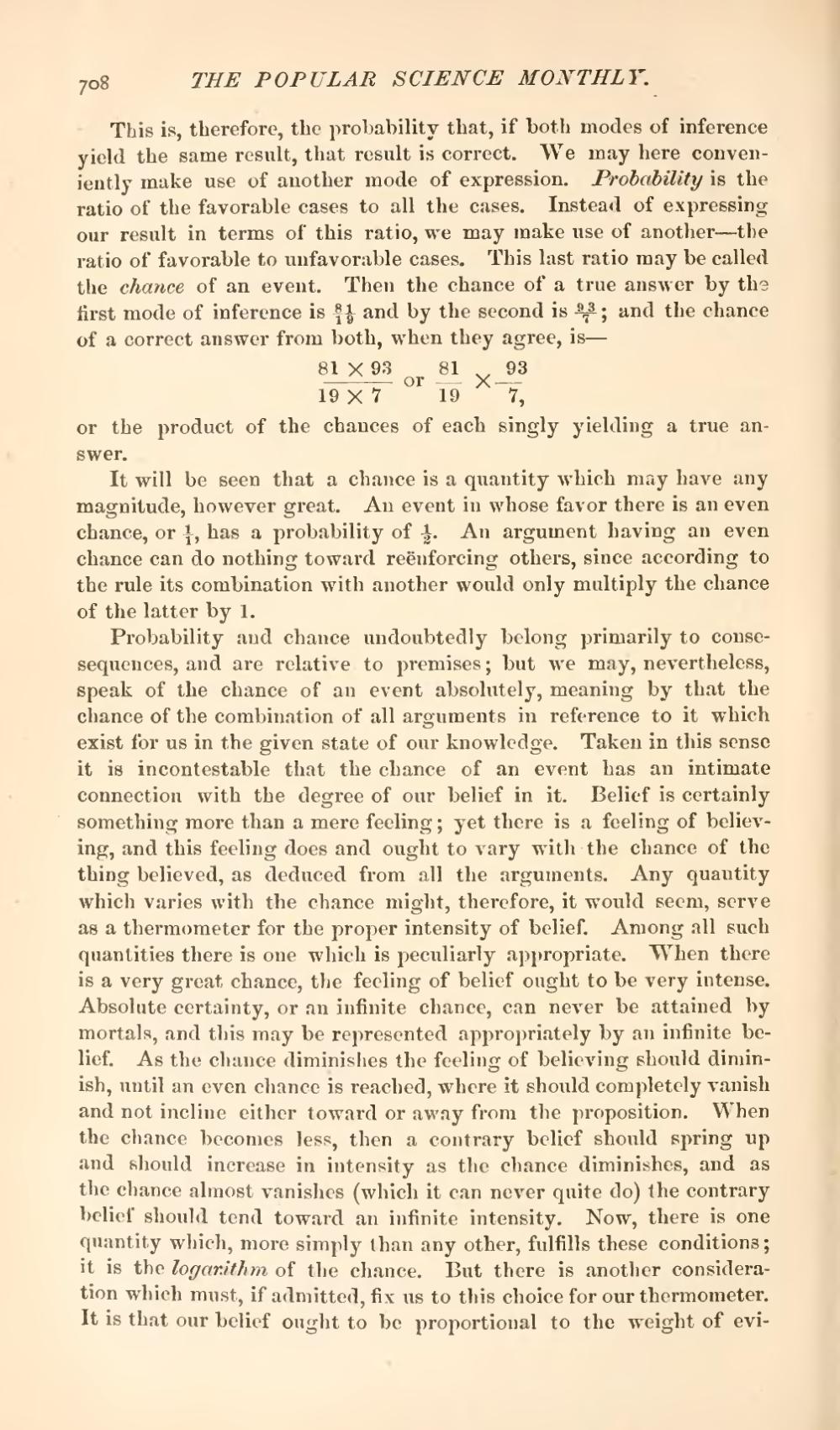This is, therefore, the probability that, if both modes of inference yield the same result, that result is correct. We may here conveniently make use of another mode of expression. Probability is the ratio of the favorable cases to all the cases. Instead of expressing our result in terms of this ratio, we may make use of another—the ratio of favorable to unfavorable cases. This last ratio may be called the chance of an event. Then the chance of a true answer by the first mode of inference is 8119 and by the second is 937 and the chance of a correct answer from both, when they agree, is—
| 81 × 93 | or | 81 | × | 93 |
| 19 × 7 | 19 | 7, |
or the product of the chances of each singly yielding a true answer.
It will be seen that a chance is a quantity which may have any magnitude, however great. An event in whose favor there is an even chance, or 11, has a probability of 12. An argument having an even chance can do nothing toward reënforcing others, since according to the rule its combination with another would only multiply the chance of the latter by 1.
Probability and chance undoubtedly belong primarily to consequences, and are relative to premises; but we may, nevertheless, speak of the chance of an event absolutely, meaning by that the chance of the combination of all arguments in reference to it which exist for us in the given state of our knowledge. Taken in this sense it is incontestable that the chance of an event has an intimate connection with the degree of our belief in it. Belief is certainly something more than a mere feeling; yet there is a feeling of believing, and this feeling does and ought to vary with the chance of the thing believed, as deduced from all the arguments. Any quantity which varies with the chance might, therefore, it would seem, serve as a thermometer for the proper intensity of belief. Among all such quantities there is one which is peculiarly appropriate. When there is a very great chance, the feeling of belief ought to be very intense. Absolute certainty, or an infinite chance, can never be attained by mortals, and this may be represented appropriately by an infinite belief. As the chance diminishes the feeling of believing should diminish, until an even chance is reached, where it should completely vanish and not incline either toward or away from the proposition. When the chance becomes less, then a contrary belief should spring up and should increase in intensity as the chance diminishes, and as the chance almost vanishes (which it can never quite do) the contrary belief should tend toward an infinite intensity. Now, there is one quantity which, more simply than any other, fulfills these conditions; it is the logarithm of the chance. But there is another consideration which must, if admitted, fix us to this choice for our thermometer. It is that our belief ought to be proportional to the weight of evi-
